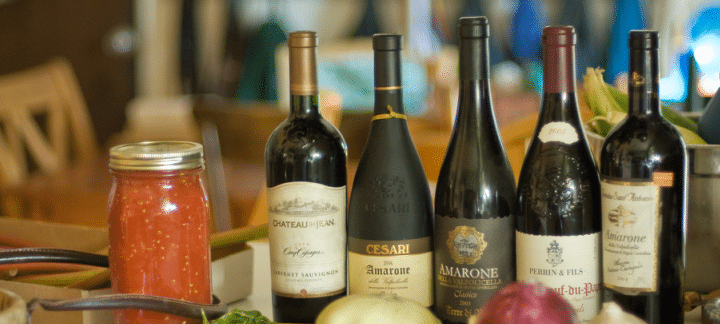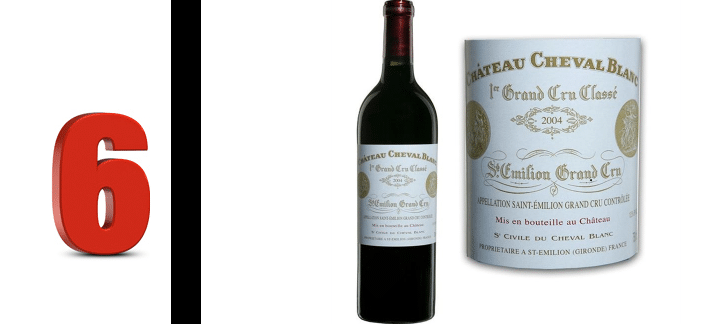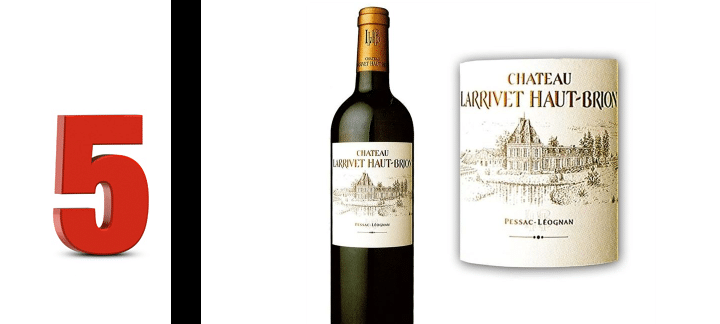

It is now time to talk about the wines that occupy the sixth and the fifth spot in our Top Ten, top dedicated to the best wines of the year 2014, tracked by value share amongst the most prestigious brands traded on the exchange and listed on the 2014 Liv-ex Power 100 list, namely Château Cheval Blanc for the sixth place and Château Haut Brion for the fifth place.

The Château Cheval Blanc vinery is considered to have three qualities: one third Pomerol as it is located on the boundary, one third Graves as the soil is gravelly, and the remaining third typical Saint-Émilion. The vineyard area is spread over 41 hectares, with 37 hectares planted with an unusual composition of grape varieties of 57 percent Cabernet Franc, 40 percent Merlot, and small parcels of Malbec and Cabernet Sauvignon. The average annual production is 6000 cases of the Grand vin and 2500 cases of the second wine, Le Petit Cheval. The château remained in the Laussac-Fourcaud family until 1998, when it was sold to Bernard Arnault, chairman of luxury goods group LVMH, and Belgian businessman Albert Frère, with Pierre Lurton installed as estate manager, a constellation similar to that of the group’s other chief property Château d’Yquem.
When talking about this wine brand a certain controversy rears it’s ugly head. The story unfolded as follows. The manager of Château Cheval Blanc, Jacques Hebrard, was outraged at the evaluation of his 1981 vintage barrel samples made by influential wine critic Robert M. Parker, Jr. and asked him to re-taste. Upon arriving, Parker was attacked by Hebrard’s dog as the manager stood idly by and watched. When Parker asked for a bandage to stop the bleeding from his leg, Parker says Hebrard instead gave him a copy of the offending newsletter. Hebrard denies that Parker was bleeding. However, Parker did retaste the wine and found it significantly changed from his previous evaluation; he therefore gave the wine an updated evaluation in a later issue of his publication The Wine Advocate. However, this brand takes up the respectable sixth place in our top ten for 2014, wine brands that represent strong competitors for the market share of our current year.

Château Haut-Brion, our fifth place wine brand, is a French wine, rated a Premier Cru Classé (First Growth), produced in Pessac just outside the city of Bordeaux. It differs from the other wines on the list in its geographic location in the north of the wine-growing region of Graves. Of the five first growths, it is the only wine with the Pessac-Léognan appellation and is in some sense the ancestor of a classification that remains the benchmark to this day. From the 2007 vintage, in connection with the 75-year anniversary of Dillon family ownership, the red second wine Château Bahans Haut-Brion was released under the new name Le Clarence de Haut-Brion. The name Château Bahans Haut-Brion had been in use for at least a century, and over a period it was sold without a declared vintage.
Starting with the 2009 vintage, the white second wine Les Plantiers du Haut-Brion was renamed La Clarté de Haut-Brion. Manager Jean-Bernard Delmas retired in 2003, and was succeeded by his son Jean-Philippe Delmas. Prince Robert of Luxembourg (son of Prince Charles of Luxembourg) who has acted as an administrator at Haut-Brion since the age of 18, became in 2008 Président Directeur Général of Domaine Clarence Dillon.
Image courtesy of Don LaVange – Some rights reserved
© www.bestwineimporters.com 2015





